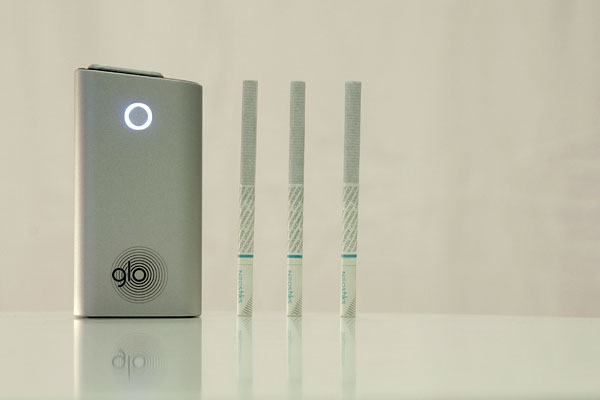A glowing example

British American Tobacco says that toxicant levels in vapor from its heat-not-burn (HNB) tobacco product, glo™, have been found to be about 90 percent lower than the levels in traditional-cigarette smoke.
In heating rather than burning tobacco, glo operated at much lower temperatures than did a cigarette: about 240̊C versus 900̊C, BAT said in a press note issued to coincide with the publication in Regulatory Toxicology and Pharmacology of the results of a BAT study.
“Our studies on glo reveal that this product produces significantly lower levels of harmful or potentially harmful components compared to a cigarette,” Dr. James Murphy, head of reduced risk substantiation at BAT was quoted as saying. “The vapor produced was found to have significantly reduced numbers and lower levels of toxicants compared to cigarette smoke, and so it should in principle expose consumers to much less toxicants,” he says.
‘It is the toxicants in smoke that cause most smoking-related diseases,’ said BAT in its note.
‘Scientists at British American Tobacco analysed and compared the vapor from glo™ – a commercially available tobacco heating product (THP) – and smoke from a reference cigarette (3R4F) and found substantial reductions in the glo™ emissions for all smoke toxicant groups measured. Most cigarette smoke toxicants could not be detected in the glo™ vapor.’
“This comprehensive chemical assessment is part of a science-based approach that we have developed to demonstrate the reduced-risk potential of THPs and other next generation products relative to smoking cigarettes,” said Murphy. “We believe that such an approach is essential to communicating to consumers and regulators that the available information on our products is based on sound, evidence-based science.”
‘The scientists set out to measure 126 substances, including toxicants that have been identified by Health Canada, the US Food and Drug Administration (FDA) and the WHO Study Group on Tobacco Product Regulation (TobReg) as harmful or potentially harmful to health, and other compounds produced by burning tobacco,’ the note said.
‘A smoking robot was used to generate smoke or vapor in the laboratory in a way that mimics realistic use of the products. Air samples were also produced with which to compare the smoke and vapor.
‘An analysis of the emissions showed that glo™ produces a much simpler aerosol than cigarettes. glo™ emitted over 95 percent less, on average, of 102 of 126 compounds that could be measured, compared to smoke. For the nine toxicants that the WHO proposes for lowering in cigarette smoke, the overall average reduction was 97.1 percent, while for the 18 requiring mandatory reporting by the FDA, it was 97.5 percent. Twenty-four substances could not be detected/quantified in the glo™ emissions, smoke or both.
‘The findings add to a body of evidence that could be used to support glo™ as a potential reduced-risk product compared to conventional cigarettes.’
